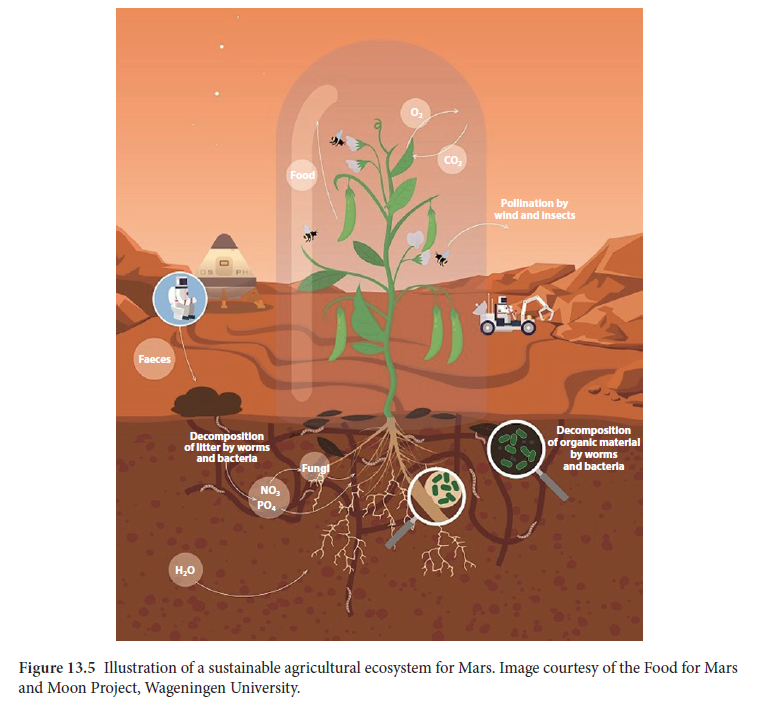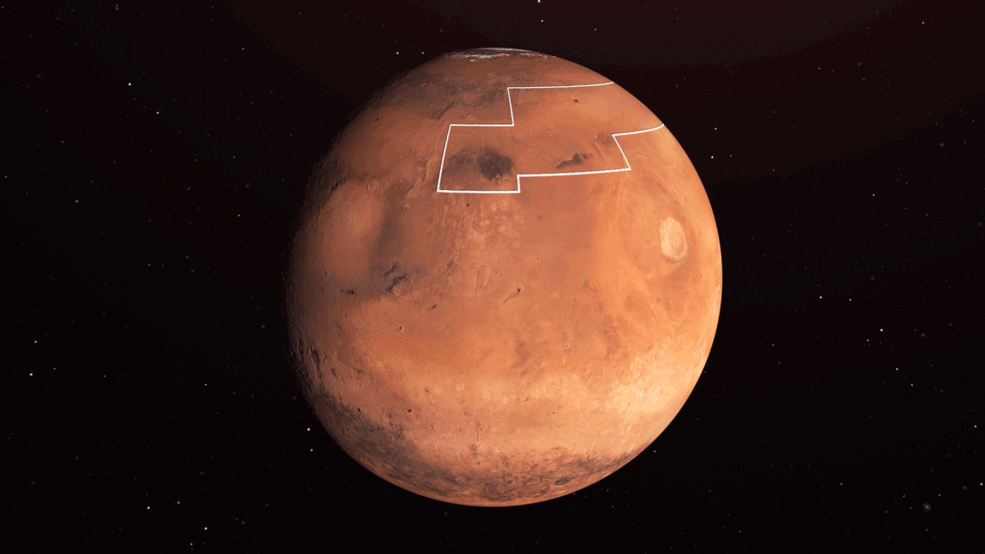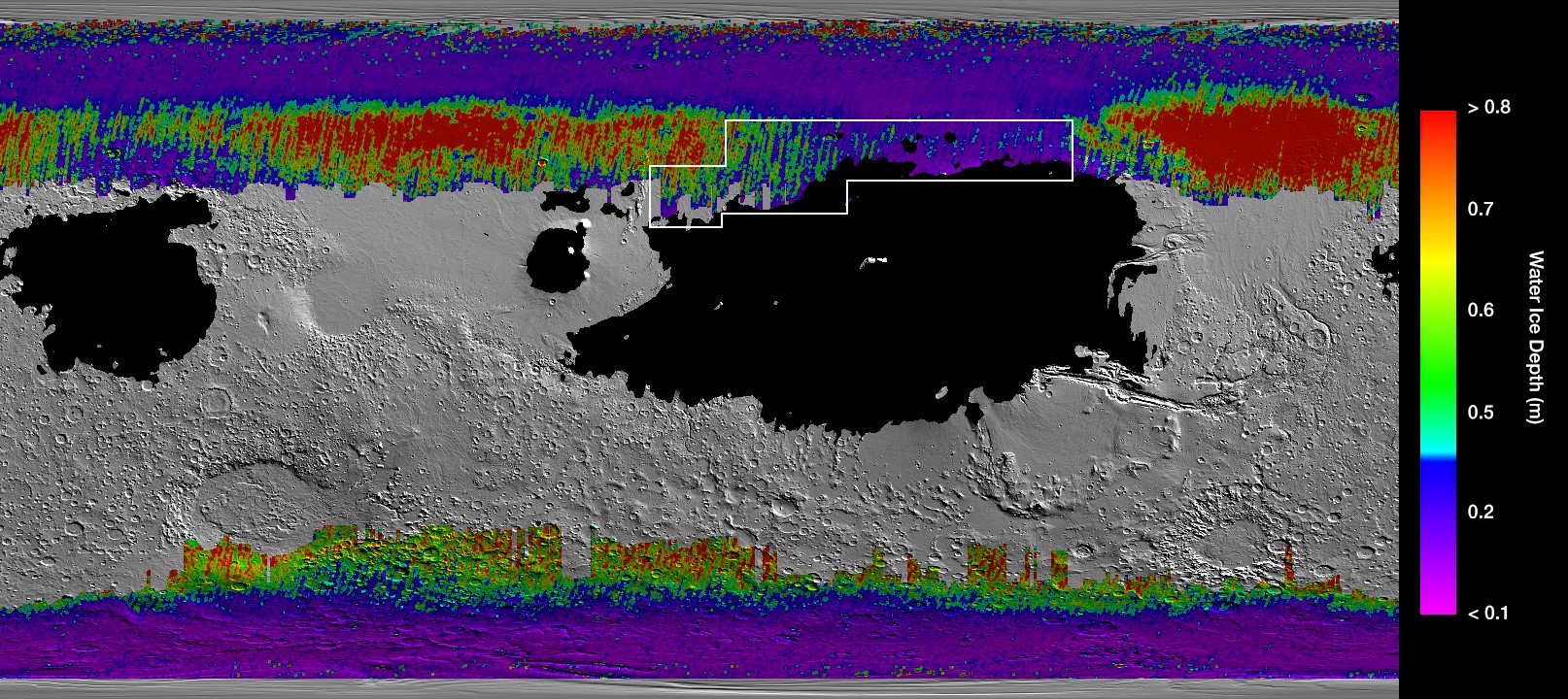Weeds on Mars
Topics to Consider
- Phased progression of development/colonisation
- Objectives for colonisation and criteria of success
- Earth-based simulation of extra-terrestrial environments
- Ethics of extra-terrestrial exploration
- Intersection of exploration ethics with, ecological justice, with critical plant studies, rights ethics, etc.
- Ethics of invasion/colonisation
Research and Design Tasks
Narrative
Presume that the audience knows little and is sceptical. Prepare accordingly. Start from the knowns. Move slowly. Support all with evidence. Provide critical interpretations and alternative to all points.
- Prepare an argument plan
- Prepare precedents for the visual style
Visualisation of places, events and scenarios forces deeper and more detail consideration of design decisions and consequences.
- Collect a library of source images that represent possible visual prototypes
- Plants, mosses, bryophytes, pteridophytes, cryptogams, lithophytes, lichens, etc.
- Other hardy lifeforms and extremophiles
- What are historical or geographical precedents of Mar-like environments and how do they look like? 1
- Images and evidence of how industrial exploration and settlements actually look like to contrast with likely romantic bias of tiny humans in sublime wilderness
For some visual thoughts, see Visuals
Evidence and Criteria
Organise what is known, proposed, possible, desirable, and ethical into a taxonomy, table or a diagram of approaches.
Group potential colonies by meaningful attributes, justify.
- Group by time
- Group by the number of humans
- Group by the characteristics of the external environment (terraformed and to what degree)
- Group by the type of society, organisation, economic system
Organise into a referenced table along these lines:
| Aspect | Details | 10 Humans | 100 Humans | 1000 Humans | 1000000 Humans |
|---|---|---|---|---|---|
| Challenges | Provide evidence of challenges, issues, risks, and dangers | ||||
| Benefits | Provide evidence of benefits, differentiate between stakeholders | ||||
| Design responses | Suggest concrete design responses, in reference to the above. Support with sketches and numbers | ||||
| Ethics | Assess whether design responses should go ahead. List precautions. Support with evidence |
Design Steps
| Design agents | Design tasks |
|---|---|
| Places | Provide descriptions of places and sites you will design for: location, dimensions, geology, climate, social context, access, etc. Provide maps, perspective images, and other relevant drawings. |
| Periods | Define and justify the periods into which you are designing. Provide concrete description of conditions as occurring your selected places and globally, if different from those habitually presumed. |
| Stakeholders | Select and define a small group of relevant stakeholders that exemplify the key issues: two contrasting plants, two contrasting humans, some other beings, maybe including families, communities or organisations. Provide evidence-based portraits of them in concrete stages of their life. |
| Events | Combine your places, periods, stakeholders in event sequences that can tell meaningful stories about the consequences of your designs. |
Resources
- Reserach, select and justify locations/sites
- List analogous or prototypical location and situations on Earth
- Collect high-quality precedent information
- Images and drawings of Mars settlement designs, research based, analyse, taxonomize
- Obtain high quality maps and images of Mars, position and conditions relative to the other celestial bodies, surfaces of Mars from space, surface vehicle, maps listing resource distributions, heights, etc.
- Identify groups and organisations working on designs and list
- Produce a table of what has and has not been considered
- List key activities
- List key motivations (reserach proposals for mining and other economic justification: deep mines will be cheaper, there will be valuable new research, etc.)
Challenges
Biological contamination, aka invasive organisms, aka weeds
- Preventing "Sick" Spaceships | Science Mission Directorate
- The International Space Station is home to potentially dangerous bacteria
Project Options
- Terraforming on Earth (Aral sea, etc?). The draining of the Aral Sea was terraforming in reverse.
Precedents and Evidence
- Existing projects
- Existing programmes, plans and methods, governmental, commercial, by NGOs (for example, projects aiming to construct 'smart forests' 2)
- Existing organisations and research groups (consider reaching out for the conversation, interview and pointers, a visit if possible in Oz)
- Suitable graphical and presentation styles
Design Approaches
Hajduk, Chris. “The First Settlement of Mars.” In Terraforming Mars, edited by Martin Beech, Joseph Seckbach, and Richard Gordon, 331–51. Hoboken: Wiley-Scrivener, 2022.
Ideas
Will there be humans in space or on Mars? Can plants live with robots only? Can plants become robots or integrated with robots?
Tools
- What data?
- What software or languages?
Delivery
- What text?
- What drawings and images?
- What physical models or prototypes?
- What digital models or simulations?
Dissemination
- What academic communities?
- What journals or publications?
- What conferences or exhibitions?

Dust storm over Tempe Terra, seen by Mars Express' HRSC during a pass on June 17, 2011.
Ten things you did not know about Mars: 3. Weather reports
Background
Zubrin, Robert. Entering Space: Creating a Spacefaring Civilization. New York: Jeremy P. Tarcher, 1999.
McMahon, Sean. “The Aesthetic Objection to Terraforming Mars.” In The Ethics of Space Exploration, edited by James S. J. Schwartz and Tony Milligan. New York: Springer, 2016.
Seedhouse, Erik. Survival and Sacrifice in Mars Exploration. Cham: Springer, 2015.
Musk, Elon. “Making Humans a Multi-Planetary Species.” New Space 5, no. 2 (2017): 46–61. https://doi.org/10/ggsrft.
Musk, Elon. “Making Life Multi-Planetary.” New Space 6, no. 1 (2018): 2–11. https://doi.org/10/ggsrfv.
Jeevendrampillai, David, and Aaron Parkhurst. “Making A Martian Home: Finding Humans On Mars Through Utopian Architecture.” The Journal of Architecture, Design and Domestic Space 18, no. 1 (2021): 25–46. https://doi.org/10/gqj696.
Shishko, Robert, René Fradet, Sydney Do, Serkan Saydam, Carlos Tapia-Cortez, Andrew G. Dempster, and Jeff Coulton. “Mars Colony in situ Resource Utilization: An Integrated Architecture and Economics Model.” Acta Astronautica, The Fifth International Conference on Tethers in Space, 138 (2017): 53–67. https://doi.org/10/gbt64c.
Organizations
The Mars Society, it has an Australian chapter
The Association of Mars Explorers (mars-club.org)
Association of Mars Explorers | Facebook
Designers
Space Exploration Architecture
Projects
The Wilding of Mars on Vimeo. There is a chapter about this project here:
Harriss, Harriet, and Naomi House, eds. Working at the Intersection: Architecture after the Anthropocene. Milton: RIBA Publications, 2022.
The Marscape Project by Sanna Sarkama - Issuu
Mars-related design and architecture | Dezeen
Terraforming
More on Terraforming
- It is possible to terraform Mars, or so some strongly argue.
- Different degrees of modification are possible, some are much harder.
- It is likely that many or most of the required resources are available on Mars. The extraction methods are not clear, however.
- The more difficult question is who will Mars be terraformed for?
"The problem of terraforming Mars is not so much one of mechanics, but upon deciding what kind of Mars is envisioned at the end of the process, and for who Mars is being terraformed for. The idea of simply homesteading Mars (like the old wild west) and allowing unfettered, laissez-faire resource extraction are entirely unrealistic (if not entirely obnoxious given the great ruin that such expansionism and free-industrial exploitation have precipitated on Earth, and the idea of fully terraforming Mars, to enable the free-movement of humans upon its surface, under conditions similar to that of Earth, is as equally unrealistic. What is needed is a better, workable vision of terraforming. Mars cannot be turned into an Earth Mark II on any timescale that bears commonality to past human endeavor..."
Beech, Martin. “Terraforming Mars: A Cabinet of Curiosities.” In Terraforming Mars, edited by Martin Beech, Joseph Seckbach, and Richard Gordon, 417–65. Hoboken: Wiley-Scrivener, 2022.
Pulsiri, Nonthapat, Damani Proctor, Richard B. Cathcart, and Jorge Omar Buteler. ‘Mars Terraforming: A New Plan for the Red Planet’. In 2022 Portland International Conference on Management of Engineering and Technology (PICMET), 1–5. Portland: IEEE, 2022. https://doi.org/10/grcndd.
Plants on Mars
Growing Plants in Space | NASA
plants grown in space | astrobotany.com
Plants in Space - The Royal Botanic Garden Sydney (nsw.gov.au)
Wamelink, G. W. Wieger, Joep Y. Frissel, Wilfred H. J. Krijnen, M. Rinie Verwoert, and Paul W. Goedhart. “Can Plants Grow on Mars and the Moon: A Growth Experiment on Mars and Moon Soil Simulants.” PLOS ONE 9, no. 8 (2014): e103138. https://doi.org/10/xp3.
Cannon, Kevin M., and Daniel T. Britt. “Feeding One Million People on Mars.” New Space 7, no. 4 (2019): 245–54. https://doi.org/10/gqj7q2.
Llorente, Briardo, Thomas C. Williams, and Hugh D. Goold. “The Multiplanetary Future of Plant Synthetic Biology.” Genes 9, no. 7 (2018): 348. https://doi.org/10/gfkhq2.
Certini, Giacomo, Suniti Karunatillake, Yu-Yan Sara Zhao, Pierre-Yves Meslin, Agnes Cousin, Donald R. Hood, and Riccardo Scalenghe. “Disambiguating the Soils of Mars.” Planetary and Space Science 186 (2020): 104922. https://doi.org/10/gqj7q8.
Plant Cultivation
Wamelink, G. W. Wieger, Joep Y. Frissel, Wilfred H. J. Krijnen, and M. Rinie Vervoert. “Crop Growth and Viability of Seeds on Mars and Moon Soil Simulants.” In Terraforming Mars, edited by Martin Beech, Joseph Seckbach, and Richard Gordon, 313–30. Hoboken: Wiley-Scrivener, 2022.
Growth on regolith should be possible.
Issues:
- No regolith on Earth for experiments
- No nitrogen for fertilisation. Possible solution: bring Rhizobium bacteria from the earth, grow legumes, maybe free living cyanobacteria
- Regolith is hydrophobic. Use worms
- No phosphate. Use human faeces. Use fungi to obtain it from the soil
- Pollination. Bring insects such as bumblebees. Or use robotic bees.

What are the ethical implication of controlling cultivation of plants on Mars? What are the parallels to the situations on the Earth? Patented crops with matching fertilisers and insecticides. Industrial pollinations. What are the dangers of these approaches? Parasites, disease, low resilience to change.
Controlled food is researched but not spontaneous and self-sustaining landscapes that will likely be necessary if one chooses to pursue terraforming. Are they possible? How? What are the analogues places on Earth? Damaged landscapes? Urban or industrial places? Indoor environments? What are the evolutionary dynamics in such places?
Dunn, Rob R. A Natural History of the Future: What the Laws of Biology Tell Us About the Destiny of the Human Species. New York: Basic Books, 2021.
Dunn, Rob R. Never Home Alone: From Microbes to Millipedes, Camel Crickets, and Honeybees, the Natural History of Where We Live. New York: Basic Books, 2018.
Food on Mars
Newman, Lenore, and Evan D. G. Fraser. Dinner on Mars: The Technologies That Will Feed the Red Planet and Transform Agriculture on Earth. Toronto: ECW Press, 2022.
Settlement and Colonisation
Salotti, Jean-Marc. ‘Minimum Number of Settlers for Survival on Another Planet’. Scientific Reports 10, no. 1 (2020): 9700. https://doi.org/10/gq986k.
Data Sources
Mars Reconnaissance Orbiter approach, maps, images
Planetary Data System map multiple plantes, including hi-res Mars mapping
Mars Weather at Elysium Planitia
Malin Space Science Systems - Weakly weather
Location of likely water on Mars


Architectural Concepts and Considerations Working Group. “Architecture Working Group: 2020 Workshop Final Report.” Vienna: Moon Village Association, 2021.
This note is about terraforming.
Cf. macroengineering that is the umbrella term to, geoengineering and terraforming.
Definitions
"The terraforming definition is predicated on a life contribution, and without it we cannot talk about terraforming. For this reason, the microbial contribution is fundamental."
Polgári, Márta, Ildikó Gyollai, and Szaniszló Bérczi. “Terraforming on Early Mars?” In Terraforming Mars, edited by Martin Beech, Joseph Seckbach, and Richard Gordon, 161–279. Hoboken: Wiley-Scrivener, 2022.
"[A]s life and humanity have done historically on Earth, we will have to improve the natural environments we find to create the worlds we want. Applied to other planets, this process of planetary engineering is termed "terraforming.""
Zubrin, Robert. Entering Space: Creating a Spacefaring Civilization. New York: Jeremy P. Tarcher, 1999.
"Terraforming involves processes aimed at adapting the environmental parameters of alien planets for habitation by earthbound life, and it includes methods for modifying a planet’s climate, atmosphere, topology, and ecology."
Pak, Chris. Terraforming: Ecopolitical Transformations and Environmentalism in Science Fiction. Liverpool: Liverpool University Press, 2016.
Background
Beech, Martin. Terraforming: The Creating of Habitable Worlds. Astronomers’ Universe. New York: Springer, 2009.
Beech, Martin, Joseph Seckbach, and Richard Gordon, eds. Terraforming Mars. Hoboken: Wiley-Scrivener, 2022.
Ethics
Cf. geoethics.
Sparrow, Robert. “The Ethics of Terraforming.” Environmental Ethics 21, no. 3 (1999): 227–45. https://doi.org/10/fz754r.
Matthews, Jack J., and Sean McMahon. “Exogeoconservation: Protecting Geological Heritage on Celestial Bodies.” Acta Astronautica 149 (2018): 55–60. https://doi.org/10/gds3n8.
On Terraforming Mars.
Ethical issues, in a simplistic manner.
Jakosky, Bruce M. The Search for Life on Other Planets. Cambridge: Cambridge University Press, 1998.
Seven arguments in favour of terraforming Mars are:
- A thick atmosphere of carbon dioxide, even though it would be non-- breathable, would greatly assist colonists by enabling them to explore the Red Planet equipped only with breathing apparatus rather than with full environmental space suits.
- Locally generated biomass would be an important source of energy, food, and other useful materials for colonists.
- Such an activity would provide a long term challenge on which humans could focus, with a goal that is both useful and desirable for humans.
- Such a project would be an essential prerequisite to any future human colonization of Mars.
- An active biosphere on Mars would provide a refuge for many forms of life on another planet in the solar system, safe against the event of war or a natural global catastrophe that might destroy life on Earth.
- Much of the research would be highly relevant to addressing environmental problems at home and to understanding the intricacies of its biosphere.
- Becoming a spacefaring civilization is less threatening than military developments or an arms race at home, and would provide a worthy outlet for international cooperation and competition and/or technology developments.
Seven arguments against are:
- The time scale is so long that governmental institutions would not be able to maintain the necessary commitment to such a project.
- It is not clear that there are significant economic benefits, especially in the short term, that would be commensurate with the cost and effort involved.
- Scarce human and economic resources would be drawn from other worthwhile projects, such as addressing social and terrestrial environmental problems.
- Something could go awry during the course of the project that could damage the new Martian biosphere beyond repair, leaving us in a worse situation than if we had never intervened.
- Humans have made such a bad job of managing the Earth’s environment that it would be presumptuous to imagine we are wise enough to succeed on another world.
- If terraforming was successful, then Mars might become a tempting target for military and/or economic exploitation, thereby creating more sociopolitical problems than we have at present.
- The evolution of a Martian biosphere could be inherently unpredictable, and might be detrimental to humans or (by back contamination) to Earth.
Genta thinks that these arguments against can be easily dismissed.
Genta, Giancarlo. “Terraforming and Colonizing Mars.” In Terraforming Mars, edited by Martin Beech, Joseph Seckbach, and Richard Gordon, 3–22. Hoboken: Wiley-Scrivener, 2022.
- This is a very reasonable point and we cannot rely on governments to perform such a task. Terraforming a planet can be undertaken only in the context of a developed space economy, in which private enterprise has a large, or even the primary, role.
- In the context of a space economy, are the market forces which will drive the process. Terraforming Mars needs to be seen in the context of the Martian economy, and its advantages are unquestionable.
- This is the usual argument against space exploration in general, which has proven to be inconsistent. First the resources which will be attracted by terraforming (or exploring space in general) are largely insufficient to solve ‘Earth’ problems, but above all enterprises like exploring, colonizing and terraforming, a planet create resources and do not consume them. Technology is not a zero-sum game, and Earth’s problems can be solved only if technology is free to progress.
- If we stop for the fear of failure we will never progress. No early technology was as dangerous as fire, and if our ancestors used the principle of precaution would have refused to use it. We would still be at the palaeolithic.
- This is just a revisited form of point 4.
- Developing new resources will decrease the conflicts on our planet. It is the decrease of resources in a society which refuses to accept new challenges and to take new opportunities which will make more conflictual the relations on Earth.
- Each biosphere evolves following its own lines and the laws along which this happens need to be studied, and will be studied as a part of the terraforming process. Strict anti-contamination procedures need to be a part of any terraforming process. To this we must add that all evolutionary processes are extremely slow, with all time to take the required counter-measures. Actually the reasonable objection to terraforming Mars (or any planet) is that by doing so we could cause any local life form to get extinct. As stated by McKay and Haynes, “If, and only if, no potentially viable forms of life are found should we attempt to introduce immigrant species from Earth… What would be the greater good, Mars barren or Mars endowed with life? … Should the Martian biosphere be tended to ensure at least early development in a manner agreeable to Homo Sapiens?”.
This note is about astrobiology but by extension is also about the origin of life, the nature of life and the meaning of life on Earth.
Ethical Context: Life History
For the context, the overarching story about what it all means and how it all is can be important as an antidote to outdates stories such as religions, nationalisms, etc.
Swimme, Brian, and Thomas Berry. The Universe Story: From the Primordial Flaring Forth to the Ecozoic Era—A Celebration of the Unfolding of the Cosmos. New York: HarperCollins, 1992.
On the overview of science the history of Earth/life also see
Bryson, Bill. A Short History of Nearly Everything. London: Doubleday, 2003.
Clarke, Bruce. Gaian Systems: Lynn Margulis, Neocybernetics, and the End of the Anthropocene. Minneapolis: University of Minnesota Press, 2020.
Astrobiology
Overviews
Kolb, Vera M., ed. Handbook of Astrobiology. Boca Raton: CRC Press, 2019.
General
Davies, Paul. The Eerie Silence: Renewing Our Search for Alien Intelligence. Boston: Mariner Books, 2011.
Dick, Steven J. Astrobiology, Discovery, and Societal Impact. Cambridge: Cambridge University Press, 2018.
Gale, Joseph. Astrobiology of Earth: The Emergence, Evolution, and Future of Life on a Planet in Turmoil. Oxford: Oxford University Press, 2009.
Ghorbani, Ahmad. “The Universe: Inanimate Space or a Living Organism?” Extreme Life, Biospeology and Astrobiology; Cluj-Napoca 10, no. 1 (2018): 1–5.
Impey, Chris, Anna H. Spitz, and William R. Stoeger, eds. Encountering Life in the Universe: Ethical Foundations and Social Implications of Astrobiology. Tucson: University of Arizona Press, 2013.
Persson, Erik. “The Moral Status of Extraterrestrial Life.” Astrobiology 12, no. 10 (2012): 976–84. https://doi.org/10/f2z9mj.
Peters, Ted. “Ten Ethical Issues in Exploring Our Solar Ghetto.” Journal of Astrobiology & Outreach 4, no. 1 (2015): 1–8. https://doi.org/10/gfspxb.
Sotos, John G. “Biotechnology and the Lifetime of Technical Civilizations.” International Journal of Astrobiology 18, no. 5 (October 2019): 445–54. https://doi.org/10/ggczj5.
Vakoch, Douglas A., ed. Astrobiology, History, and Society: Life Beyond Earth and the Impact of Discovery. Berlin: Springer, 2013.
Ethics and Governance
Cockell, Charles S., ed. Human Governance Beyond Earth Implications for Freedom. Cham: Springer, 2015.
Cockell. “The Ethical Status of Microbial Life on Earth and Elsewhere: In Defence of Intrinsic Value.” In The Ethics of Space Exploration, edited by James S. J. Schwartz and Tony Milligan, 167–80. New York: Springer, 2016.
See also:
Subnotes
Footnotes
Halliday, Thomas. Otherlands: A World in the Making. London: Allen Lane, 2022.˄
Prebble, Sarah, Jessica McLean, and Donna Houston. ‘Smart Urban Forests: An Overview of More-Than-Human and More-Than-Real Urban Forest Management in Australian Cities’. Digital Geography and Society 2 (2021): 100013. https://doi.org/10/gj4mrj.˄